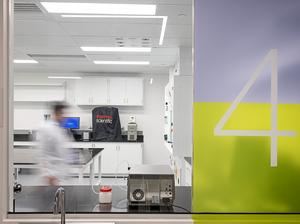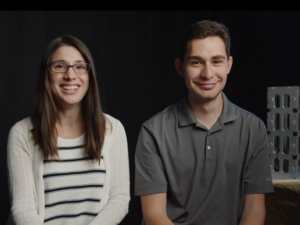Like most startups, we’ve had many small wins and a few bumps along the way since we launched VentureApp. Our mission is to map the world’s business graph in order to connect businesses with the right solutions. As we are primarily available in Boston right now, we believe we have a long way to go in achieving our goal.
We hit an early milestone recently – $1M in annual recurring revenue – which we celebrated with some low quality champagne and an Instagram post. Getting to $1M isn’t easy, and we observed and learned a lot on our way. Here are some of the take-aways gleaned.
Start lean and don’t over-build
When we started testing our thesis for what would become VentureApp, we used a simple email address. We didn’t write any code. As businesses began emailing us requests for things they needed help with--finding a payroll provider, contacting an executive coach, etc.--we validated our idea enough to invest a bit more in our (lack of) technology. We created a Zendesk account to handle requests. It wasn’t until about this time last year that we pushed our first software.
The first phase of our business was about validating the problem we solve, not determining what the minimum viable product should look like. Talking to hundreds of businesses helped us determine what to test in our early attempts at developing a minimum viable product.
Formalize processes early, but not too early
One of our co-founders, Boris Revsin, did most of our early sales. We couldn’t assume that many of our early sales would necessarily be repeatable. Often, a startup’s first sales can be false positives. There is a lot of bias in your first sales. You are mostly selling to people you have prior relationships with and you cannot expect additional sales hires to sell the same way a co-founder sells.
In December 2015, Boris brought on our first sales hire, Josh Belinsky, who was a co-op at Northeastern at the time. Often, startups hire great sales folks from more established companies and these people struggle. It takes a unique personality to handle lack of structure and sell a product that isn’t quite where it needs to be. Josh has made himself comfortable with uncertainty and fast change.
Once Josh proved that he could repeatedly hit a healthy quota, Boris began thinking through how to formalize our operation. In May 2016, we hired Kareem Agha as our director of sales. You can learn more about Kareem's thought process here, but here's the skill set that enabled him to succeed with us: He can sell, recruit and coach people up (player-coach), and he hit the ground running with knowledge of formal processes to use in sales cycles, pipeline analysis, buyer journeys, quotas and reporting.
Following processes like Kareem's was critical for small, repetitive successes. It gave us the ability to look back at a specific month and know what went right or wrong, so we could grow month over month.
Don’t be afraid to make changes
As a startup, our product team is constantly iterating and changing our product’s features. Our sales team is, too. Recently we shifted from two sales teams to one. Early on, we believed that, as a two-sided marketplace, we needed to offer a different service to our demand- and supply-side companies. We quickly realized that all businesses want to find, recommend and connect with other businesses. We redesigned the product to view all businesses the same, some just with more functionality than others (premium vs. basic). We realized our sales team and process needed to do the equivalent. We combined our two sales teams into one, with everyone responsible for various growth goals.
Listen to customers and then data
Many venture-backed companies talk about being data-driven, but in the early stages of a company when you have minimal data, how do you do this? The best way is to talk with real people. Greg Gomer, one of our other co-founders, essentially acted as our first analytics product, talking to hundreds of businesses.
Our sales team now talks to current and prospective customers, aggregating feedback for our product team. More data will come through measurements within our product, but the only way to really be “data-driven” early is to talk to customers and quantify the feedback as best you can through multiple touchpoints.
So what’s next?
In the coming months we’ll be rolling out a new product that we’ve been working on for the past several months. We’re excited about it for many reasons. Without giving away too much, we believe our new product will achieve two things: 1) map the world’s business graph and connect businesses in a smarter way than ever before to help bolster economic growth and 2) put Boston tech back on the map with a true platform company.








